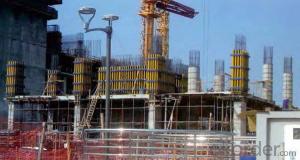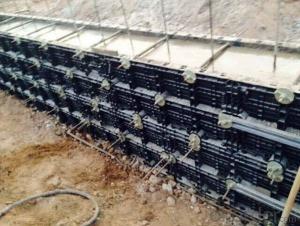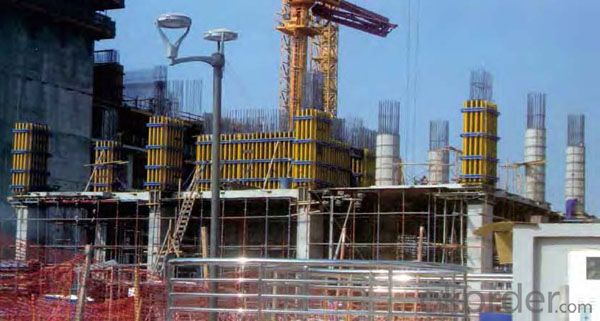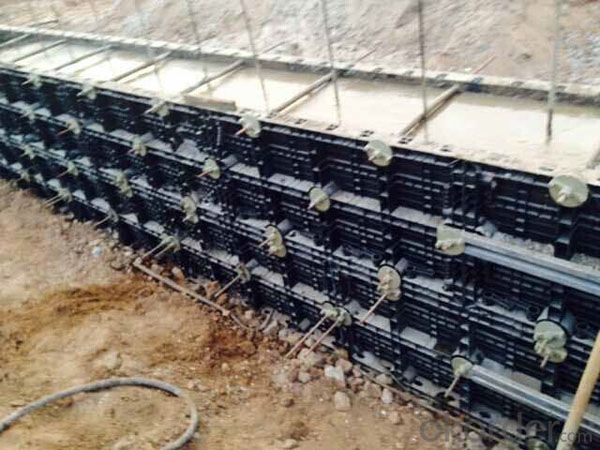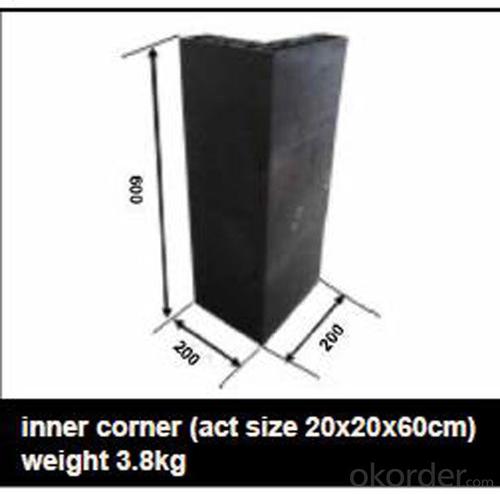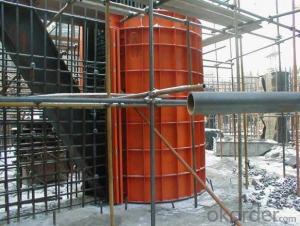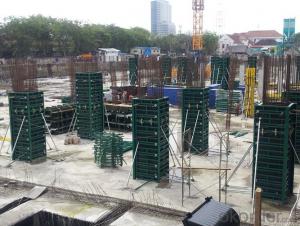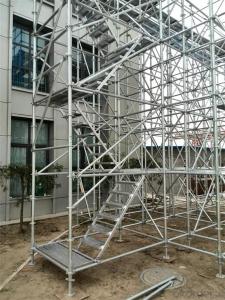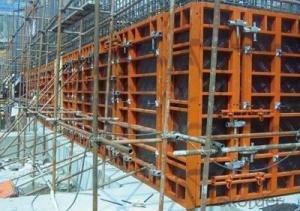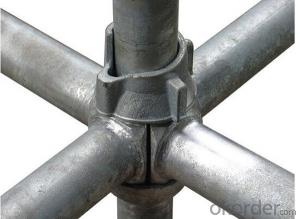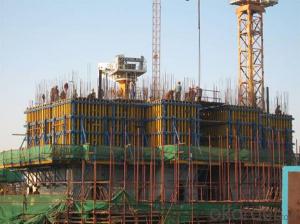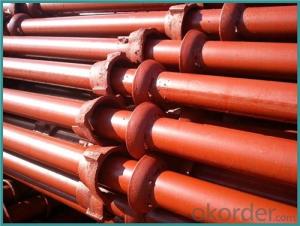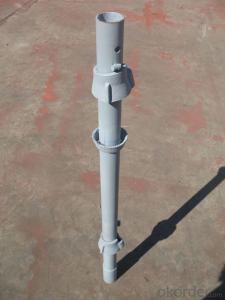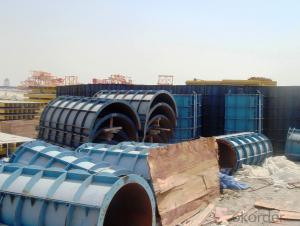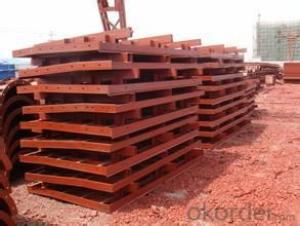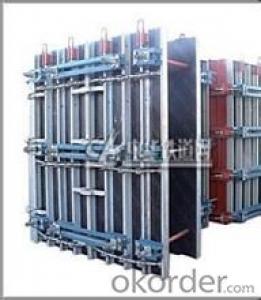Scaffolding Parts Formwork Doka Formwork Scaffolding With High Quality
- Loading Port:
- Tianjin
- Payment Terms:
- TT OR LC
- Min Order Qty:
- 5000 set
- Supply Capability:
- 50000 set/month
OKorder Service Pledge
OKorder Financial Service
You Might Also Like
Scaffolding Parts Formwork Doka Formwork Scaffolding With High Quality
Circular Column Formwork Outrigger For Scaffolding With New Design
Plastic Formwork Concrete Formwork Circular Column Used Scaffolding Props New Design
Developing with new technology materials, steel formworks is no longer a must in construction concrete process. More and more buildings are established with plastic formworks. And workers love this new formworks much more.
The advantages of plastic formworks:
Scaffolding Parts Formwork Doka Formwork Scaffolding With High Quality
1.First of all--light
Yes it is the first advantage of plastic formwork. It wins the great praise of both contractors and workers.
The biggest panel is 120×1500px,weights 10.5kg only. It can be lift and set up by one person easily, which means there is no need for cranes on site.Saves a lot of cost and time.
2.Easy set up
Different size of panels can firmly locked by simply turn the special handles to 90 degree. The Panels has rib on the back, which makes the system need not traditional wood blocks and nails. The panels have holes to fit tie rod, guarantee the strength of the whole system.
3.Modularity
Modular formworks composed by different size of panels..
4.Strength
The handles are made by high strength Nilon, each panel locked by at least 4 handles, which makes the whole system strong enough to pour 1000px walls.
5.Environment friendly
The system needs no cut and nail due to the variety size. Also it needs nearly no wood. The material can be recycled after broken, so it will not pollute the environment.
6.Consequent
Concrete does not stick to plastic formwork, thus the panels need no oil before using, and can be cleaned simply by water. The surface of the wall which build by modular formwork is smooth and without rework.
Scaffolding Parts Formwork Doka Formwork Scaffolding With High Quality
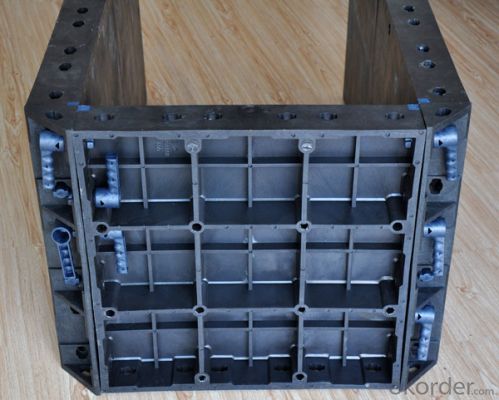
Scaffolding Parts Formwork Doka Formwork Scaffolding With High Quality
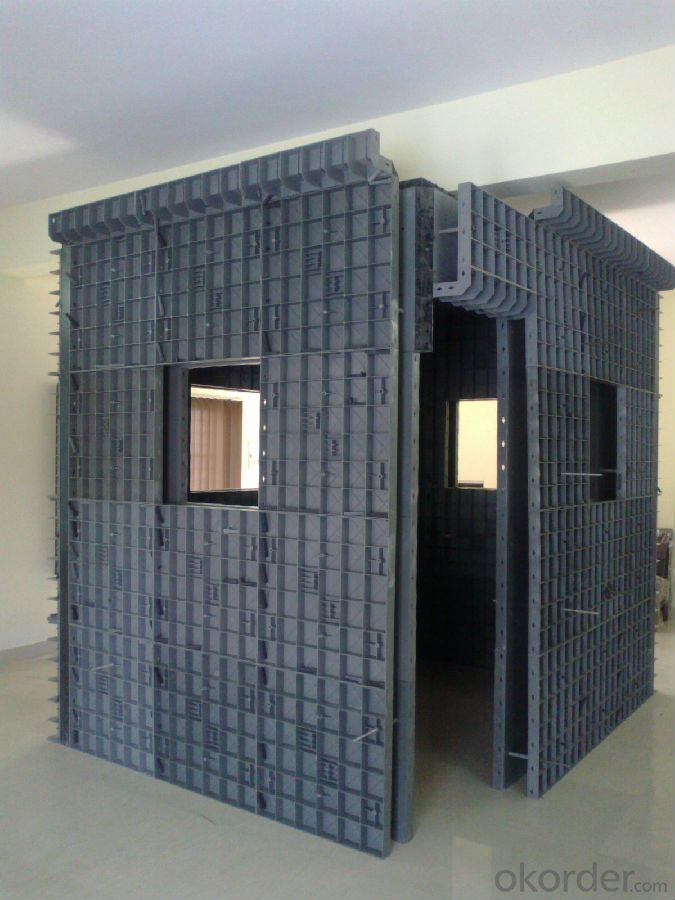
Scaffolding Parts Formwork Doka Formwork Scaffolding With High Quality
Advantage
* Good loading capacity
* Easy to assemble and dismantle
* Stable and durable thanks to its structual design & automatic welding quality
* Customized solution helps you work safe, save cost and convenient
* Excellent quality for formwork & scaffolding with wide choices
Packing
in bulk or in bundle, or as requested
Shipping
15-20 Days.
Normally small orders, it needs just 15-20 business days to the port. For goods with stock, it would be even shoter.
Scaffolding Parts Formwork Doka Formwork Scaffolding With High Quality
Other scaffolding & formwork products:
(1) Scaffolding System:
Including Ringlock Scaffolding System and accessories; Cuplock Scaffolding System and accessories; Kwikstage Scaffolding System and accessories; Haki Scaffolding System and accessories;
(2) Scaffolding Frame & Accessories:
Including Walk Through Frame Scaffolding; Ladder Frame Scaffolding; Accessories; we also can make scaffolding according to your samples or drawings.
(3) Scaffolding Couplers/Clamps:
We can produce all kinds of forged and pressed couplers, including British type couplers, American type couplers, German type couplers, Italian type couplers ,fence couplers, BRC coplers and so on. We also can produce according to your drawings or samples.
FAQ Scaffolding Parts Formwork Doka Formwork Scaffolding With High Quality
Why Us?
We are one of the Top 500 in the world, largest construction materials supplier in China. Also we are a state-owned company and respond to every customer with large and also small orders.
We own professional manufacturers with powerful producing capacity.
Extensive and comprehensive quality control system
Excellent products with competitive prices.
Efficient services in pre and after sale.
Full energy with affluent experience team.
- Q: What are the key considerations for selecting the appropriate steel frame formwork system for tall structures?
- When selecting the appropriate steel frame formwork system for tall structures, there are several key considerations that need to be taken into account: 1. Load-bearing capacity: The formwork system must be able to withstand the weight of the concrete and other materials used in the construction of tall structures. It should have a high load-bearing capacity to ensure the safety and stability of the structure. 2. Flexibility and adjustability: Tall structures often have complex shapes and varying floor plans. The formwork system should be flexible and adjustable to accommodate these design variations. It should be able to adapt to different heights, angles, and curves to ensure accurate and precise construction. 3. Speed and efficiency: Construction of tall structures requires a fast and efficient formwork system to meet project deadlines. The selected system should be easy to install, dismantle, and move to different levels. It should also allow for quick pouring and curing of concrete to expedite the construction process. 4. Safety: Safety is of utmost importance in any construction project, especially in tall structures. The formwork system should have safety features such as guardrails, handrails, and non-slip surfaces to protect workers from falls and accidents. It should also provide adequate access and egress points to ensure safe movement of workers within the structure. 5. Durability and reusability: Tall structures often require multiple pours of concrete, so the formwork system should be durable enough to withstand repeated use without compromising its structural integrity. Additionally, it should be designed for easy dismantling, cleaning, and reassembly to minimize costs and waste. 6. Cost-effectiveness: Selecting a cost-effective formwork system is crucial for tall structures, as the project budget can be significantly impacted by the choice of formwork. The system should offer a good balance between quality, performance, and cost. It is important to consider not only the initial investment but also the long-term maintenance and reusability costs. By considering these key factors, project managers and engineers can select the most appropriate steel frame formwork system for tall structures, ensuring the efficient, safe, and successful completion of the construction project.
- Q: How is steel frame formwork dismantled after concrete curing?
- Once the concrete has fully cured, the steel frame formwork can be dismantled. This involves a series of steps to ensure the safe and efficient removal of the formwork. Firstly, a thorough inspection of the concrete structure is conducted to verify that it has achieved the necessary strength and stability. This inspection is crucial to prevent any potential damage to the structure during dismantling. Next, the props that supported the formwork during the concrete pouring and curing process are removed. This is done with caution to avoid any sudden movement or collapse of the structure. Following that, the formwork panels, which were used to shape the concrete, are stripped. This is typically accomplished by loosening the clamps or bolts that hold the panels together. Great care is taken to avoid damaging the panels, as they may be reused in future projects. Once the formwork panels are removed, the shuttering and other accessories, such as wedges, ties, and pins, are taken down. These accessories are carefully collected and stored for future use or recycling. After the formwork has been completely dismantled, the surface of the concrete structure is thoroughly cleaned to eliminate any debris or residue left behind by the formwork. This cleaning process ensures a smooth and pristine finish for the structure. Depending on the condition and quality of the dismantled formwork components, they may be stored for future use in other construction projects. If the components are damaged or no longer suitable for reuse, they are disposed of or recycled in accordance with environmental regulations. Overall, the dismantling of steel frame formwork after concrete curing necessitates meticulous planning, inspection, and execution to guarantee the safety and integrity of the structure. By following the appropriate procedures, the process can be carried out efficiently, enabling the completion of the construction project.
- Q: How does steel frame formwork prevent leakage and seepage of concrete during pouring?
- Steel frame formwork prevents leakage and seepage of concrete during pouring by providing a strong and rigid structure that securely holds the concrete in place. The steel frame is designed to tightly fit together, ensuring there are no gaps or openings for the concrete to escape. Additionally, the formwork is properly sealed with rubber gaskets or other waterproof materials, effectively preventing any leakage or seepage of the concrete.
- Q: Can steel frame formwork be used in projects with limited construction site access to construction vehicles or equipment?
- Projects with limited construction site access to construction vehicles or equipment can utilize steel frame formwork. This versatile and durable system does not require extensive equipment or vehicles for installation. Its lightweight characteristics allow for easy assembly and dismantling on-site, without the need for heavy machinery. The steel frame formwork system can be transported in smaller sections or panels, making it suitable for construction sites with limited access. These panels can be carried by hand or transported using smaller, more maneuverable vehicles such as pickup trucks or trailers, which are better suited for restricted spaces. Moreover, steel frame formwork is a practical choice for projects where traditional formwork methods may prove impractical due to limited access. Its modular design provides flexibility and adaptability, allowing it to accommodate various construction site conditions. To conclude, steel frame formwork is a viable option for projects that face limited access to construction vehicles or equipment. Its lightweight nature, ease of assembly, and adaptability make it a feasible solution for such scenarios.
- Q: Can steel frame formwork be used for the construction of swimming pools?
- Yes, steel frame formwork can be used for the construction of swimming pools. It is a durable and strong material that can provide the necessary support and shape for the pool structure. Additionally, steel frame formwork allows for flexibility in design and can be easily assembled and disassembled, making it suitable for constructing swimming pools of various shapes and sizes.
- Q: What are the different types of alignment systems used with steel frame formwork?
- There are various types of alignment systems that are commonly used with steel frame formwork. These systems are designed to ensure accurate and precise alignment of the formwork components, allowing for the construction of straight and level concrete structures. Some of the different types of alignment systems used with steel frame formwork include: 1. Adjustable Alignment Bolts: This is one of the most commonly used alignment systems. It consists of adjustable bolts that are installed at the corners of the steel frame formwork. These bolts can be adjusted to ensure that the formwork is level and aligned properly. 2. Alignment Clamps: Alignment clamps are used to hold the formwork panels together and maintain their alignment during the concrete pour. These clamps are designed to provide a strong and secure connection between the formwork panels, ensuring that they do not shift or move during the construction process. 3. Alignment Pins: Alignment pins are used to align and connect the steel frame formwork components. These pins are inserted into pre-drilled holes in the formwork panels, ensuring that they are properly aligned and secured together. 4. Alignment Wedges: Alignment wedges are used to adjust and align the steel frame formwork panels. These wedges are inserted between the formwork panels and can be adjusted to ensure that the panels are level and aligned properly. 5. Magnetic Alignment Systems: Magnetic alignment systems use powerful magnets to hold the formwork panels together and maintain their alignment. These systems are particularly useful when working with steel frame formwork, as the magnets provide a strong and secure connection between the panels. Overall, the different types of alignment systems used with steel frame formwork are designed to ensure accurate and precise alignment of the formwork components, allowing for the construction of straight and level concrete structures. These alignment systems play a crucial role in achieving the desired quality and finish of the concrete construction project.
- Q: Does steel frame formwork require any special bracing or support during construction?
- Special bracing or support is necessary for steel frame formwork during construction. Steel frame formwork serves as a temporary structure that holds and supports wet concrete until it solidifies and becomes self-supporting. The system consists of vertical and horizontal metal beams connected with various connectors and braces. To maintain stability and safety, the steel frame formwork must be appropriately braced and supported during construction. Bracing is crucial to prevent the formwork from collapsing or deforming under the weight of the wet concrete. It evenly distributes the load and provides additional support to the formwork system. The specific bracing requirements for steel frame formwork depend on factors such as formwork height and size, concrete pressure, and the structure's design. Bracing options include diagonal or cross braces, tie rods, horizontal and vertical struts, and adjustable clamps or props. The bracing system must be designed and installed by experienced professionals who can ensure it can withstand the forces and pressures exerted by the wet concrete. It is important to follow the manufacturer's instructions and guidelines for bracing and support to maintain the structural integrity of the steel frame formwork system. In conclusion, special bracing or support is necessary for steel frame formwork during construction to ensure stability and safety. Proper bracing is vital in preventing the collapse or deformation of the formwork system due to the weight of the wet concrete. The type and amount of bracing required depend on various factors and should be designed and installed by professionals in accordance with the manufacturer's guidelines.
- Q: How does steel frame formwork help in achieving accurate concrete alignment?
- Steel frame formwork is a construction technique that involves using steel frames to hold the concrete in place until it is hardened. This method is highly effective in achieving accurate concrete alignment due to several reasons. Firstly, steel frame formwork provides a strong and rigid structure that ensures the concrete is held in place securely during the pouring and setting process. The steel frames are designed to withstand the pressure and weight of the wet concrete, preventing any movement or deformation. This stability allows for the concrete to be poured with precision, resulting in accurate alignment. Secondly, steel frame formwork is adjustable and customizable. The frames can be easily adjusted and aligned to fit the desired shape and dimensions of the concrete structure. This flexibility enables construction workers to achieve accurate alignment, as they can make precise adjustments to ensure the formwork matches the intended design. Additionally, the use of steel frame formwork allows for tight joints and connections between different sections of the formwork. This tightness ensures that no gaps or spaces are present, preventing the concrete from leaking or flowing out of the desired alignment. The precise joints and connections also contribute to the overall accuracy of the concrete alignment. Furthermore, steel frame formwork provides a smooth surface for the concrete to be poured onto. The smoothness of the steel frames helps in achieving a uniform and level finish, as it reduces the likelihood of any irregularities or bumps on the surface. This smooth surface allows for the concrete to settle evenly, resulting in accurate alignment. In conclusion, steel frame formwork is an effective method for achieving accurate concrete alignment. Its strong and rigid structure, adjustability, tight joints, and smooth surface all contribute to ensuring precise alignment of the concrete. By using steel frame formwork, construction projects can achieve high levels of accuracy and quality in their concrete structures.
- Q: How does steel frame formwork accommodate for different concrete curing methods?
- The use of steel frame formwork in construction offers great flexibility in accommodating various concrete curing methods. It allows for the utilization of different curing materials, including water, steam, or chemicals, depending on the desired outcome. This is made possible by the strong and resilient nature of steel, which can withstand the extreme temperatures and pressures associated with steam curing, as well as the corrosive effects of certain chemicals. Furthermore, steel frame formwork can be easily adjusted or modified to create different curing environments. For instance, if a particular section of the concrete structure requires accelerated curing, temporary enclosures can be constructed using steel panels to retain the necessary heat and moisture for faster curing. On the other hand, if a slower curing method is preferred, the steel formwork can be designed to allow for increased ventilation and air circulation, promoting natural air curing. Moreover, steel frame formwork offers a high level of customization, allowing for the integration of various curing systems or equipment. For example, heating elements or pipes can be embedded within the formwork to provide controlled heating or cooling during the curing process. This is especially advantageous in situations where a specific temperature range needs to be maintained for optimal concrete strength development. Additionally, the reusability of steel frame formwork is a significant advantage. It can be easily disassembled and reassembled for different projects or sections of a structure. This feature allows for the implementation of different curing methods based on specific project requirements or resource availability. In conclusion, steel frame formwork is a versatile construction technique that can accommodate a wide range of concrete curing methods. Its durability, adaptability, customizability, and reusability make it an ideal choice for meeting various curing requirements, whether they involve water, steam, chemicals, accelerated curing, or natural air curing.
- Q: Can steel frame formwork be used for the construction of cultural facilities?
- Certainly! Steel frame formwork is a viable option for constructing cultural facilities. Its versatility and durability make it an excellent choice for creating strong and stable structures. It is commonly used in various construction projects, including museums, theaters, and art galleries. There are several advantages to using steel frame formwork in the construction of cultural facilities. Firstly, it offers a high level of flexibility and adaptability, allowing for the creation of intricate and visually appealing designs. This is especially important in cultural facilities that often incorporate unique architectural features and artistic elements. Additionally, steel frame formwork has outstanding strength and load-bearing capacity, making it suitable for large-scale cultural facilities that require spacious and open areas. It can handle heavy materials and equipment, ensuring the integrity of the building's structure. Furthermore, steel frame formwork allows for efficient construction processes. Its modular design enables easy assembly and disassembly, reducing construction time and increasing productivity. This is particularly beneficial for cultural facilities that need to be completed quickly for hosting exhibitions, performances, or other cultural events. Moreover, steel frame formwork offers enhanced safety features. The use of steel provides a high level of fire resistance, ensuring the safety of the structure and its occupants. It is also resistant to weather conditions and corrosion, making it suitable for cultural facilities that are exposed to outdoor elements. Additionally, steel frame formwork is an environmentally sustainable construction method. Steel is a recyclable material, reducing the environmental impact of construction projects. It also has a long lifespan, minimizing the need for frequent repairs or replacements. In conclusion, steel frame formwork is a suitable choice for constructing cultural facilities. Its versatility, strength, efficiency, safety features, and sustainability make it an ideal option for creating impressive and functional spaces that can showcase and preserve cultural heritage.
Send your message to us
Scaffolding Parts Formwork Doka Formwork Scaffolding With High Quality
- Loading Port:
- Tianjin
- Payment Terms:
- TT OR LC
- Min Order Qty:
- 5000 set
- Supply Capability:
- 50000 set/month
OKorder Service Pledge
OKorder Financial Service
Similar products
Hot products
Hot Searches
Related keywords
